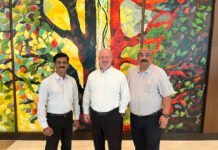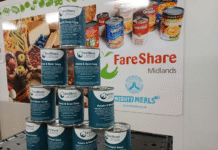Empowerment of the historically excluded, sustainability, and enhancing the skills for employability are the key issues that Avery Dennison has been supporting under its CSR program. Taking a step further in this direction, the company inaugurated a Community Library and Resource Centre (CLRC) in Murad Gari, Jewar, UP in partnership with Rural Education and Development (READ) India which will provide education and vocational reading material to underprivileged children. The initiative will also offer programs related to livelihood skills training for women and girls, soft skills for youth, and health awareness programs for the community.
The inauguration was done by Dr Arunvir Singh (IAS), chief executive officer, Yamuna Expressway Industrial Development Authority (YEIDA) wherein, apart from the local community and a selected team of Avery Dennison, the country director of Rural Education and Development (READ) India was also present with her colleagues.
Speaking on the occasion, Manvi Sushil, HR director, Avery Dennison – South Asia said, “Avery Dennison believes in empowering rural communities to create equity of opportunities and to move closer towards building a world where necessary access to knowledge and skills open doors while helping us achieve a more prosperous future in the communities we operate in”.
Saurabh Agarwal, senior director and general manager, LPM – South Asia, Avery Dennison added, “At Avery Dennison, we believe that we can contribute to the future of our nation by doing our bit to provide necessary means to the people of the communities we operate in and help them realize their dreams and avail opportunities for skill development.”

Dr Geetaa Malhotra, mentioned that community interventions are the key elements for READ India. “We empower with the concept of one woman, one family, one village”. This concept has a ripple effect, meaning, the women who learn the skillset share the same with other women. In times of difficulty, she starts her own micro-enterprise and adds to the family income. The power to empower others continues and leaves a ripple effect.
The objective behind launching this Community Library and Resource Centre (CLRC) is to provide easy access to required books, computers for basic and advanced learning and proper study rooms. Children can come to play indoor games and read storybooks. Qualified staff has been hired from within the local community to educate the children and create employability opportunities. This model is also complementing and supplementing the government’s efforts of addressing the programs like READ India, digital India and also addressing sustainable development goals on education, skilling and health awareness.
The company had earlier initiated a similar program at two locations. One such program is running at Basai, Gurugram from 2019 and another one in Ranjangaon, Pune from 2021.











